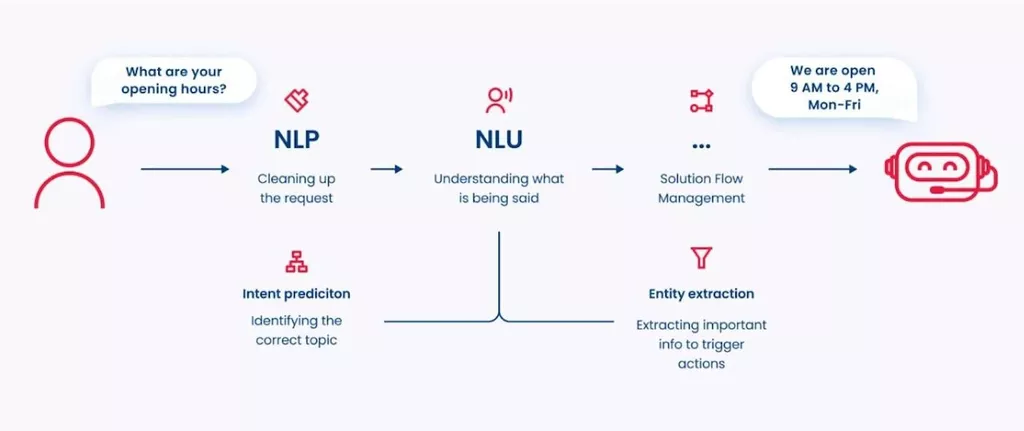These 2 approaches inherit all the advantages and drawbacks of incremental integration testing. The main differences between them lie within the particular conditions and situations during which they are used. Integration testing is a sort https://www.globalcloudteam.com/ of software testing where components of the software program are steadily built-in and then tested as a whole.
System Integration Testing (sit) Using Data-driven Method

To effectively perform SIT, collaboration between improvement and testing groups is indispensable. Ignoring integration exams can lead to undiscovered errors until manufacturing failures occur. By fostering a tradition of quality and teamwork, builders and testers can enhance software reliability and amplify person confidence. System Integration Testing (SIT) is a crucial section the place different components are examined together to make sure seamless functionality. Leveraging instruments like BrowserStack, teams can effectively validate integration, trade knowledge accurately, and prevent potential points in production sit testing meaning. System Integration Testing (SIT) takes place within the software program testing life cycle after the unit testing part.

Prime 5 Instruments For Integration Testing

This method makes it easier to rapidly identify deviations from expected behaviors and helps cut back handbook effort. System integration testing (SIT) is a important element of business operations. It identifies and resolves issues within systems, information, and processes to ensure all components work together correctly.
Incremental Integration Testing:
System integration testing is all about collaboration between completely different teams. We have dedicated QA teams performing system integration testing of apps and websites as a outcome of they know the overall functionality updates and upgrade changes. The incremental method entails systematically including modules individually or as per the requirement whereas maintaining a logical relationship between them. Considering the dependencies between modules, the process is essential since this testing strategy ensures seamless information flow between these modules. And as soon as all modules can be found, testers test them collectively to examine their interfaces and knowledge flows. If no errors are detected, the tip person should have the ability to efficiently full their transaction.
Low-level Part Vs High-level Element

In a fine-grained approach, SIT will target all the method down to the part degree and confirm system functionality from the bottom stage up. In a moderate-grained approach, SIT will target the interface and test how all of the parts interact and communicate. In a coarse-grained approach, SIT will target the complete system or simply an important portion. Ready to improve the standard of your software program and ensure your methods work flawlessly together? Contact us to learn extra about our integration testing services and how they will benefit your project. While it is primarily meant for unit testing, it can be used along side different instruments for integration testing.

Our System Integration Testing Method:
- The course of often starts with the event group committing new code to the shared repository, then a series of unit checks are triggered to validate the model new code.
- Key to this phase is the utilization of ‘stubs’ or ‘mocks’ to simulate external dependencies throughout isolated check case runs.
- While, Unit Testing focuses on checking the functionality of individual modules independently.
This approach may help to establish any errors inside individual components before they affect other parts of the system. System Integration Testing, or SIT, is a QA process that is leveraged to ensure the compatibility of two or extra methods. It helps to make sure that the systems are working collectively correctly and that any interactions are applicable and protected. It can also contain testing of the system’s efficiency, integrity, and compatibility. Some improvement and testing groups think about SIT a step that warrants approaches outside of what they could already be doing for integration testing.

Software To Software Program Integration Testing
Here we discover various kinds of Selenium locators and learn the way they’re used with different automation testing. Let us understand each of these approaches in additional element so as to select the approach that works greatest for you and your groups. More costly because it typically requires extra assets, including personnel, tools, and testing environments. Essential for Continuous Integration (CI) to ensure small models work as anticipated.
System Integration Testing: Greatest Practices, Benefits, And The Best Method
During the unit testing part, if any important aspects are overlooked, they are highlighted and, in turn, can be corrected earlier than the ultimate launch. What makes integration testing important is its ability to check the behavior of various models of a system altogether. When these models are taken individually, they operate appropriately with almost no errors, however when they are brought collectively, they uncover incorrect habits if that exists.
This iterative course of ensures that recognized points are resolved satisfactorily and improvements are successfully integrated into the system. Develop structured test data that accurately represents real-world scenarios. This approach ensures comprehensive testing protection and enables correct comparability of actual results against anticipated outcomes. Digging into logs and code-profiler reports to check on a product’s efficiency is time consuming. When too many stakeholders are concerned, transparency is should to foster collaboration and hold everybody on the same web page.
However, when groups incorporate open source or code primarily based software testing instruments, they create problems. For occasion, open supply platforms are neither well-documented nor simple to function (as they lack dedicated support). System integration testing helps to streamline processes by making certain that all components are working correctly before they are integrated into a larger system. This not only reduces development time but in addition ensures that every one elements of the system are functioning as intended, which results in elevated total effectivity. System integration testing helps to guarantee that all components of the system are working collectively correctly, which may improve the standard of the final product. This is particularly important for advanced methods with multiple elements that have to be tested and built-in together.
With SIT, testers can shortly verify whether or not new elements work with older ones and learn as soon as potential whether or not old elements might want an upgrade or migration. Acceptance criteria determine which requirements a project has to satisfy earlier than teams can contemplate it full. Another side of this confusion comes about when you suppose about testing varieties like SIT, which often sit in awkward parts of the pyramid in between and amongst other check types. These sorts are especially likely to get confused with others as a end result of the lines between different varieties of testing are often genuinely blurry. Configure Selenium WebDriver to automate browser interactions, for instance, automating the login process and verifying the user dashboard. Each approach has its own strengths and weaknesses, and the selection of which to use can depend on the project’s particular needs and context.

